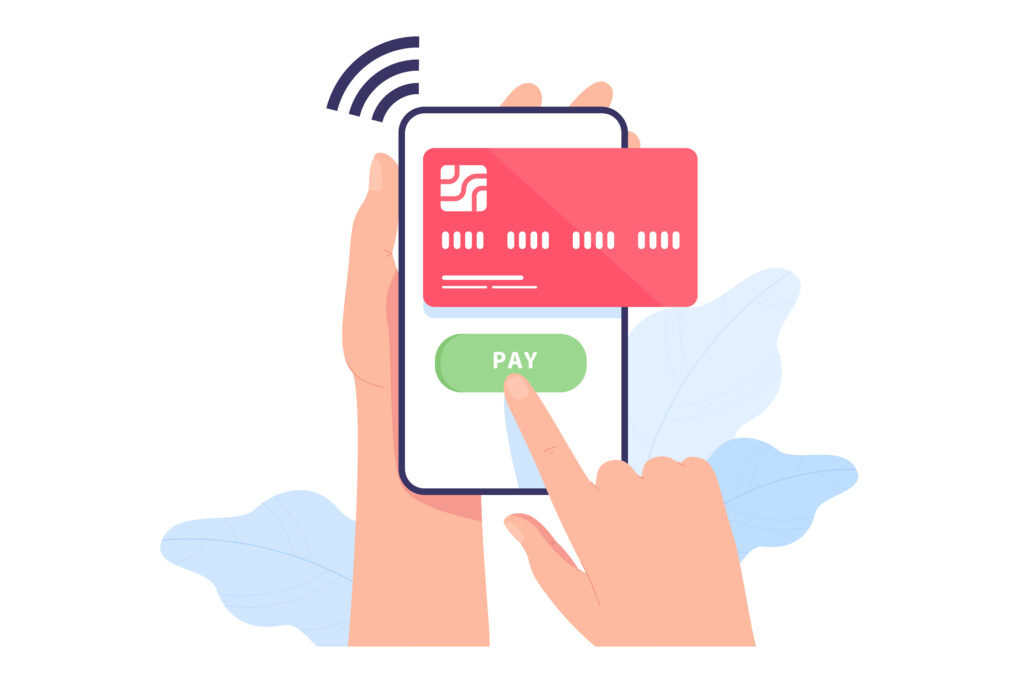
Did you know that 95% of digital products fail within their first year? Crafting successful digital product ideas requires innovation, market research, expertise, and a deep understanding of consumer needs. From identifying niche markets to leveraging emerging technologies, we’ll explore how to stand out in the competitive landscape. Stay tuned for practical tips on refining your ideas and turning them into profitable realities.
Table of Contents
Key Takeaways
- Diversify Your Offerings: Explore various types of digital products, such as educational materials, software, or digital art, to appeal to a broader audience and increase revenue streams.
- Strategic Pricing: Set competitive prices for your digital products by considering production costs, market demand, and value proposition to attract customers while ensuring profitability.
- Utilize Multiple Platforms: Increase your reach and sales potential by leveraging different online platforms like e-commerce websites, marketplaces, or social media to showcase and sell your digital products.
- Educate and Engage: Develop educational content around your digital products to inform and engage your target audience, building trust and loyalty that can lead to repeat purchases.
- Optimize Marketing Efforts: Implement effective marketing strategies such as SEO, social media campaigns, email marketing, and collaborations to promote your digital products and drive traffic to your sales channels.
- Adapt to Market Trends: Stay updated on industry trends, consumer preferences, and technological advancements to capitalize on emerging opportunities and overcome challenges in the dynamic digital sales landscape.
Understanding Digital Products
Convenience and Instant Gratification
Digital products, such as e-books or online courses, provide instant gratification to consumers since they can be downloaded or accessed immediately. This immediacy is a significant advantage for customers who value convenience and quick access to the content they desire. For instance, purchasing an e-book allows readers to start reading within seconds of completing the transaction.
- Pros:
- Immediate access
- Convenient for users
- Cons:
- Lack of physical presence

Image by pikisuperstar on Freepik
Low Production Costs and Scalability
One of the key advantages of digital products is their low production costs compared to physical goods. Since there are no materials or manufacturing processes involved, creators can develop digital products at a fraction of the cost associated with tangible items. Moreover, digital products are highly scalable because once created, they can be replicated and distributed effortlessly on various platforms.
- Create prototypes.
- Test product viability.
- Key Points:
- Cost-effective production
- Easy scalability
Profitable Digital Product Ideas for 2024
AI Chatbots
Artificial intelligence (AI) chatbots are digital product ideas that can revolutionize customer service. These bots provide instant responses, enhancing user experience by offering quick solutions to people’s queries or issues. By implementing AI chatbots, businesses can save time and money by automating customer interactions efficiently.
Integrating ideas like AI chatbots into a company’s website or messaging platforms enables businesses to engage with customers 24/7 without human intervention. This not only boosts customer satisfaction but also streamlines operations by handling routine inquiries instantly. For instance, companies in various industries such as e-commerce, healthcare, and finance are leveraging AI chatbots to provide real-time support and assistance.
- Pros:
- Enhances user experience
- Saves time and money for businesses
- Cons:
- Initial setup costs may be high

Image by pch.vector on Freepik
Online Courses
Creating online courses on sought-after skills like data analysis or digital marketing is a lucrative idea in the realm of digital products. With the rising demand for remote learning, individuals are actively seeking opportunities to upskill from the comfort of their homes. Developing comprehensive courses that cater to these needs can attract a wide audience keen on self-improvement.
Offering online courses as part of your digital product ideas portfolio opens up revenue streams through course enrollments or subscriptions. Platforms like Udemy or Coursera serve as excellent mediums to host these courses and reach a global audience interested in acquiring new skills conveniently online.
- Key Information:
- In-demand skills drive course popularity
- Remote learning trend fuels demand for online education
Types of Digital Products to Sell Online
Ebooks and Audiobooks
Ebooks and audiobooks are popular digital products that cater to people looking for convenience. Readers can access these products on various devices like smartphones, tablets, or e-readers. For instance, a self-help ebook offering tips on productivity can be accessed by users on their smartphones while commuting.
- Pros:
- Convenient accessibility across multiple devices.
- Environmentally friendly compared to traditional printed books.
- Cons:
- Requires strong marketing efforts to stand out in a competitive market.
- Potential issues with piracy and unauthorized distribution.
Templates and Digital Assets
Templates and digital assets like graphic designs or website themes are valuable for businesses seeking to save time and resources. These ready-to-use assets can help individuals create professional-looking materials without starting from scratch. For example, a small business owner can purchase a pre-designed logo template instead of hiring a designer.
- Key Information:
- Time-saving for businesses and individuals.
- Customizable options available based on specific needs.

Image by Freepik
Software Applications
Software applications such as productivity tools or photo editing software offer functionality that adds value to users’ lives. These digital products provide solutions for everyday tasks like project management or creative design work. For instance, a freelance photographer might invest in premium photo editing software for professional edits.
- Steps to Consider When Creating Digital Products:
- Identify the target audience’s needs and preferences.
- Conduct market research to understand competitors and trends.
- Develop user-friendly interfaces for seamless customer experiences.
- Guidance on Pricing Your Digital Products:
- Evaluate production costs including design, development, or licensing fees.
- Consider the perceived value of your product in the market. 3.. Test different pricing strategies through A/B testing before setting final prices.
Creating and Selling Educational Products
Addressing Audience Needs
When developing digital product ideas, it’s crucial to pinpoint the pain points of your target audience. By understanding their challenges, you can create educational products that cater directly to their specific needs. For instance, if you’re targeting business owners looking to improve their marketing strategies, consider offering courses on digital advertising or social media management.
Educational products should provide practical solutions and valuable insights that offer a clear benefit to the consumer. Whether it’s teaching new skills, providing expert advice, or simplifying complex topics, your content should be tailored to help your audience overcome obstacles and achieve their goals.
Enhancing Engagement with Multimedia
To make your educational products more engaging and interactive for customers, incorporate multimedia elements such as videos, quizzes, and interactive exercises. These features not only enhance the learning experience but also appeal to different learning styles. For example:
- Create video tutorials demonstrating key concepts or techniques.
- Include quizzes at the end of each module to reinforce learning.
- Develop interactive exercises that allow users to apply what they’ve learned in real-world scenarios.
By utilizing multimedia components effectively in your educational products, you can keep users actively engaged and increase retention rates.

Image by Freepik
Showcasing Social Proof
One effective strategy for boosting credibility and trust in your educational products is by leveraging social proof through testimonials from satisfied customers. Testimonials serve as endorsements from individuals who have benefited from your offerings firsthand. Consider showcasing feedback highlighting how your educational products have helped others succeed in their endeavors.
Testimonials can come in various forms: written reviews, video testimonials, case studies detailing success stories – all of which contribute towards building confidence among potential customers about the value of your educational content.
Effective Marketing Strategies for Digital Products
Utilize SEO Techniques
When marketing digital product ideas, using search engine optimization (SEO) is crucial. By optimizing your website and content with relevant keywords, meta tags, and descriptions, you can improve your product’s visibility in search engine results. This means that when potential customers search for related terms online, they are more likely to come across your digital product. For example, if you have a website selling downloadable guides on photography tips, incorporating keywords like “best photography tips” or “professional camera techniques” can help attract organic traffic to your site.
To further enhance the effectiveness of SEO for your digital products, consider creating high-quality content such as blog posts or articles that provide value to your target audience. This not only helps with great way establishing credibility but also increases the likelihood of other websites linking back to yours—boosting your site’s authority in the eyes of search engines.
Leverage Social Media Platforms
In today’s digital age, social media platforms play a significant role in marketing strategies. When promoting digital product ideas, leveraging platforms like Instagram, Facebook, Twitter, and LinkedIn can help you reach a broader audience and build an online community around your products. By regularly posting engaging content related to your digital products—such as tutorials, behind-the-scenes glimpses, or user testimonials—you can create buzz and generate interest among potential customers.
Moreover, social media provides an excellent opportunity to interact directly with consumers by responding to comments or messages promptly. Engaging with followers builds trust and fosters brand loyalty—a key aspect of successful marketing for digital products.
Collaborate with Influencers
Another effective strategy for promoting digital product ideas is collaborating with influencers or industry experts who have a substantial following on social media platforms or blogs. Influencers can introduce your digital products to their audience through sponsored posts or reviews—providing valuable exposure that can lead to increased sales and brand awareness.
When selecting influencers to collaborate with ensure they align closely with your niche market; this ensures that their followers are more likely interested in what you offer.

Image by Freepik
Choosing Platforms for Selling Digital Products
Features and Target Audience
When deciding where to sell your digital product ideas, it’s crucial to assess the features, pricing structures, and target audience of various platforms. Different niches may thrive on specific platforms tailored to their needs. For instance, creators targeting a tech-savvy audience might find success on platforms with advanced customization options.
Consider exploring platforms that align with your specific niche and cater to your users’ preferences. By understanding the platform’s user base, you can tailor your offerings to meet their needs effectively. This targeted approach can lead to higher engagement and increased sales within your chosen demographic.
- Pros:
- Tailored features for specific niches
- Direct access to a relevant target audience
- Cons:
- Limited reach beyond the platform’s user base
- Competition within the same niche
Security Measures and Payment Options
Ensuring a secure purchasing experience is paramount when selling digital products online. Evaluate each platform’s security measures such as SSL encryption and data protection protocols before making a choice. Consider the variety of payment options available to customers; offering diverse payment methods can attract more buyers.
Platforms that prioritize security instill trust in customers, leading to repeat purchases and positive reviews. By providing a seamless checkout process with multiple payment gateways like credit cards or PayPal, you remove barriers for potential buyers.
- Key Information:
- SSL encryption for secure transactions
- Multiple payment options enhance customer convenience

Image by pch.vector on Freepik
Setting Prices for Digital Products
Conduct Market Research
When determining the price of your digital product, it’s crucial to conduct market research. Look at similar products in your niche to understand their pricing range. By analyzing competitors, you can get a sense of what customers are willing to pay.
Research helps you gauge the affordability of your target audience and set a competitive yet profitable price point. Understanding the market landscape allows you to position your product effectively against others. For instance, if similar products are priced higher but offer more features, you may need to justify why yours is priced differently.
Factors Influencing Pricing
Consider various factors when setting prices for digital products. Production costs play a significant role in determining the minimum price that covers expenses and ensures profitability. Assess the perceived value of your product by potential customers – this includes how they view its usefulness or uniqueness.
Moreover, take into account the affordability level of your target audience. Adjusting prices based on what they can comfortably spend increases the chances of conversion and customer satisfaction. Remember that pricing too high might deter potential buyers while pricing too low could devalue your offering.
Pricing Strategies Experimentation
Experimenting with different pricing strategies is essential for finding the optimal price point for your digital product. Consider implementing tiered pricing where customers can choose from different packages based on their needs and budget constraints.
Another effective strategy is offering limited-time discounts or promotions to drive sales momentum and create urgency among potential buyers. These tactics not only attract new customers but also encourage repeat purchases from existing ones.

Image by schantalao on Freepik
Building a Website to Sell Digital Products
User-Friendly Platforms
When creating a website to sell digital product ideas, selecting a user-friendly platform is crucial. Platforms like Shopify, WooCommerce, or Squarespace are popular choices that support digital product sales seamlessly. These platforms offer templates and tools specifically designed for online stores, making it easier to set up your site quickly.
Using these platforms allows you to customize the look and feel of your website without needing advanced technical skills. For instance, with Shopify’s drag-and-drop interface, you can easily add products, create categories, and manage inventory in just a few clicks. This simplicity ensures that even beginners can build professional-looking websites efficiently.
Seamless Customer Experience
Optimizing your website’s design and navigation enhances the overall browsing experience for customers. When customers visit your site looking for digital products, they should be able to find what they need quickly. Organize products into categories or use search functionalities so customers can navigate effortlessly.
A clean and intuitive layout not only helps customers find products but also simplifies the checkout process. By reducing clutter on the site and guiding users through clear call-to-action buttons, such as “Add to Cart” or “Buy Now,” you make it easier for them to make purchases swiftly.

Image by pch.vector on Freepik
Secure Transactions
Implementing secure payment gateways is essential when selling digital goods online. Ensure that your chosen e-commerce platform supports reputable payment processors like PayPal or Stripe to protect customer information during transactions securely. Integrating SSL certificates encrypts data exchanged between users and servers during transactions.
Challenges and Opportunities in Digital Sales
Differentiation Through Unique Value Propositions
In the competitive digital marketplace, standing out is crucial. Digital product ideas need to offer something unique to attract customers. For example, a company selling online courses could differentiate by providing personalized study plans tailored to each student’s learning style.
Creating products that meet high demand and address specific customer needs can set a business apart from competitors. By conducting market research and understanding what customers are looking for, businesses can develop digital product ideas that resonate with their target audience.
- Pros:
- Helps businesses establish a strong brand identity.
- Increases customer loyalty and engagement.
- Cons:
- Requires continuous innovation to stay ahead of the competition.
- May involve higher initial investment in research and development.
Leveraging Technological Advancements for Innovation
The rapid pace of technological advancements offers endless possibilities for creating new digital products. Businesses can explore emerging technologies such as artificial intelligence or virtual reality to develop innovative digital product ideas. For instance, a fitness app could incorporate augmented reality features to enhance user experience during workouts.
Embracing technology not only fosters creativity but also opens doors to new revenue streams. By staying informed about the latest tech trends, businesses can capitalize on opportunities to introduce cutting-edge digital product ideas that cater to evolving consumer preferences.
- Research current technological trends and assess how they can be integrated into your digital products.
- Collaborate with tech experts or consultants to brainstorm innovative ways of incorporating technology into your offerings.
- Continuously monitor industry developments and update your digital products accordingly.
Final Remarks
The journey of bringing a digital product to market requires persistence, creativity, and a willingness to learn from both successes and failures. The opportunities in the digital realm are boundless, with new markets and technologies emerging at a fast pace. Staying informed, being flexible in your approach, and focusing on providing value to your customers will set you apart in a crowded marketplace.
Related Article:
The following article may contain the author’s opinions and interpretations of the subject matter. Any of the products, services, or platforms mentioned is not sponsored or affiliated.
Featured image was created with the assistance of DALL·E by ChatGPT
